
At the beginning of 2008, Sydney Theatre Company announced that Cate Blanchett and husband Andrew Upton would become artistic directors. They are currently still active with the company as of December 2010.
Sydney Theatre Company, as the premier theatre company in Australia, has been a major force in Australian drama since its establishment in 1978. The Company presents an annual twelve-play program at its home base The Wharf, on Sydney’s harbour at Walsh Bay, the nearby Sydney Theatre, which STC also manages, and as the resident theatre company of the Sydney Opera House.
Sydney Theatre Company offers Sydney audiences an eclectic program of Australian plays, lively interpretations of the classic repertoire and the best of new international writing. It seeks to produce theatre of the highest standard that consistently illuminates, entertains and challenges. It is committed to the engagement between the imagination of its artists and its audiences and the development of the theatrical art-form. As the state theatre company of NSW, it also produces a significant education program for schools, STC Ed, and in its studio space produces work devised by, and for, developing artists, originating in 1988 with Baz Lurhmann’s Six Years Old and, in its current identity, as Next Stage. The Company reaches beyond its home state, touring productions throughout Australia and internationally. It plays annually to audiences in excess of 300,000.
STC has launched and fostered the theatre careers of many of Australia’s internationally renowned artists including Mel Gibson, Judy Davis, Hugo Weaving, Miranda Otto, Geoffrey Rush, Toni Collette, Rose Byrne and Cate Blanchett.
As of 2012, Cate Blanchett has been announced to be leaving the company. To learn more read on the full STC page.
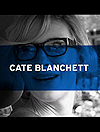 Iconoclasts is a unique program that provides viewers with an inside glimpse into the real people behind the public persona. It is a documentary series that airs on Sundance.
Iconoclasts is a unique program that provides viewers with an inside glimpse into the real people behind the public persona. It is a documentary series that airs on Sundance.
Every episodes two “creative visionaries” from different fields come together to discuss their lives and talk about what inspires them.
Cate Blanchett was be paired with professor and climate scientist Tim Flannery.
During the segments, the pairs visit each other’s worlds and share their inspirations.
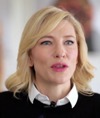 As one of Australia’s most successful artists, the name Polly Borland should ring a bell; yet more often than not, it doesn’t. Thought a virtual unknown in her home country, the notoriety of her work, charged often with themes of sexually and identity, has seen her propelled to extraordinary heights.
As one of Australia’s most successful artists, the name Polly Borland should ring a bell; yet more often than not, it doesn’t. Thought a virtual unknown in her home country, the notoriety of her work, charged often with themes of sexually and identity, has seen her propelled to extraordinary heights.
And now for for the first time, the lens faces the other direction. Through interviews with the likes of Cate Blanchett, Nick Cave, Will Self and husband, John Hillcott, we see beneath the fantastical exterior; refractions of the psychology, the insecurities and the motivations that drive this exceptional woman to such dramatic, bizarre and unforgettable imagery.
Cate Blanchett stars in the secret film by Steven Soderbergh, The Oscar-winning filmmaker behind Erin Brockovich, Traffic and the Oceans. It was took on as a side project for Soderbergh while directing the Sydney Theatre Company play Tot Mom. It also sees Wayne Blair, Zoe Carides and Cate’s husband Andrew Upton in roles. The film is regarded with secrecy but chronicles Cate and her husband’s work with the Sydney Theatre Company.
Officially, the STC considers it ”a bit of fun” between director and cast. But Soderbergh clearly threw himself into the film, even shooting on Tot Mom’s opening night, at the party afterwards in Surry Hills and at Sydney Airport as he left the country.
Told backwards from a triumphant opening night, it runs through a series of disasters during rehearsals, featuring characters apparently inspired by real-life identities.
‘It wasn’t a pisstake of the Sydney Theatre Company or Cate or Andrew at all,” said Muldoon. ”The truth is the STC is one of the most exciting theatre companies at work in the world.” The cast, which also includes Zoe Carides, Damon Herriman, Wayne Blair and a cameo from Soderbergh, made sure their characters differed from real identities.
Blanchett and Upton thought the film was hilarious. “How great that the actors got a taste of working on a film with one of the true masters,” Blanchett said. “You can tell everyone had a good time with it and it was the perfect way to balance the intensity of working on the play.”
While the STC has always thought the film was just a ”fun” project, it is expected there will be interest in public screenings when it is finished – possibly at the Sydney Film Festival.
© Text Copyright SMH. Reused for informational purposes.
Cate, alongside her husband Andrew Upton, have a production company called Dirty Films.
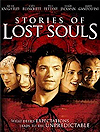
Bangers is a 1999 Australian short film starring Cate Blanchett. Her real-life husband Andrew Upton wrote, produced, and directed the film. It was their first collaboration from their production company.
Cate Blanchett portrays a marginally successful career woman preparing dinner for her gruff and unsympathetic mother. As she cooks the mashed potatoes and sausages, she tells an indifferent audience of her mother and cat about a recent promotion at work. As she rants about her job it becomes apparent that she is in the middle of a mental breakdown that culminates in burned sausage and mashed potatoes all over the floor.
In 2005 this short film was released on DVD with various other shorts entitled Stories of Lost Souls. Read more at the Internet Movie Database and purchase via Amazon.
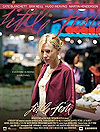
Little Fish is a 2005 Australian film directed by Rowan Woods and written by Jacquelin Perske. It was filmed in and around Sydney, in Cabramatta and in Fairfield. The film was developed and produced by Vincent Sheehan and Liz Watts of Porchlight Films with Cate Blanchett was credited as an Associate Producer for the film.
Little Fish is about Tracy Heart (Cate Blanchett), a former heroin addict who is desperately trying to escape her past and achieve her goals and dreams. Tracy lives with her mother (Noni Hazlehurst) and brother in “little Saigon” area (Cabramatta) in Sydney, Australia, where heroin is readily available.
To learn more read on the full filmography page.
A look at Cate’s endevours in writing.
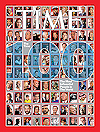
Cate Blanchett Wrote the tribute for Australia’s 26th Prime Minister Kevin Rudd’s inclusion in Time magazine’s “100 Most Influential People in the World” (Leaders & Revolutionaries section / May 12, 2008).
For me, Kevin Rudd’s quality as a leader is best illustrated by his apology to the “stolen generations” of Aborigines. For years, Australia’s government refused to apologize to Aborigines for past wrongs done to them — most notably, the systematic removal of children from their parents, an official policy that continued until the 1970s. When Rudd, 50, was elected Prime Minister last November, his first substantive act was to issue a formal apology to Aborigines in general and to the surviving members of the stolen generations, their families and relatives.
It was a watershed moment: the Parliament building was filled with Aborigines; the grounds overflowed with many more people, and there were gatherings in every major city. Most Australians felt as I did, that wrongs were put right. We all felt our government had provided us the space to begin again. This unreserved apology will pave the way for genuine reconciliation between the nation’s first peoples and nonindigenous Australians.
Rudd’s other great achievement since taking office also required overturning years of government obstinacy: he ratified the Kyoto Protocol on climate change. These measures suggest that his new government is prepared to think big and back it up with effective action.
by Cate Blanchett© Text Copyright Time Magazine
Taken for educational purposes
Cate Blanchett wrote ‘Cloudstreet’s Ticket to cloud nine’ for the Associated Newspapers Ltd. in September 2, 1999.
Cloudstreet By Tim Winton. Director: Nick Enright.
England is extremely lucky to be seeing Australia’s leading theatre company, Company B, for the first time. I’ve worked with them quite a bit in Sydney, in productions such as The Seagull and Macbeth, and they are a little like the Almeida here. There’s a sort of a loose ensemble of actors, including Geoffrey Rush, but the point is the people on the bar earn the same as the actors. That’s good. You feel like everyone in the building is really intimately involved. Non-hierarchical.
I believe the building they are based in is a converted tomato-sauce factory in Sydney. It has a lot of character. Artistic director Neil Armfield is an inspirational figure and, over the years, has built up Company B into a wonderful organization. He lets people play, lets them go. You end up watching these actors playing so beautifully together.
That’s what is so special about this production of Cloudstreet Company B are bringing over. I saw Cloudstreet in the Docklands in Sydney and I still get tingles from it. I was sitting right at the back thinking, “How am I going to sit through this?” – but you are transported, it’s such a sprawling, magical thing.
The story is sort of like a domestic Mahabharata. It’s about two families in Perth. I’m not going to tell you the plot but these two families have to share a common wall to their houses. I think the production really captures that air that exists in Australia which doesn’t exist in any other country. Also what I love about Cloudstreet is that often theatre tries to replicate film, but Cloudstreet celebrates what theatre is actually about, and that’s why I loved the night so much. It couldn’t have been produced in any other form.
by Cate Blanchett© Text Copyright Associated Newspapers Ltd.
Taken for educational purposes
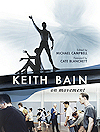
Cate Blanchett wrote the foreword for Keith Bain’s book On Movement, published by Currency House 2010. Keith Bain was a chereographer and teacher at NIDA.
Turn your headlights on …
I have to admit Keith’s was the one class I longed for each week at NIDA. His room was a place of exploration and rigorous discipline. When Keith walked in the temperature changed. He would brook no laziness but would support your failure, because in this failure he could sense advancement around the corner: the attempt at was currently impossible.
I think that being a parent now, I can fully appreciate the generosity and profundity of his pedagogy. His philosophy was to set his students on a path whereby they were equipped and aware enough as actors to no longer need him. His success could only be measured by his invisibility. Most importantly he taught us how to learn, so as time passed and jobs came and went I found myself building, alongside a body of work (and so much more importantly) a technique that allowed me to keep growing as an actor.
The main thing is, when I think about it, he taught me that to be onstage is not merely the learning of lines and characters and accents and limps and crooked hats and fat suits BUT the being available to space and what might happen in that space. How did he do that? It was about energy production and how the impetus to move has to come from somewhere, it must be specific. It was about the power and difference of various aspects of the stage so we could get a sense of what stage pictures could be and the role we played within them. It was about our body in relation to others and of course it was about the audience – what we were actually communicating. All these lessons so key to the theatre, and so important to the immature performer who can get drastically waylaid in turgid personal exploration.
Before encountering Keith I had a free-floating love and interest in dance (I had this dream of joining Pina Bausch in Wupperthal) and a very separate – but equally pressing – interest in drama and the creation of character. He synthesised these two urges in me (and in many students at NIDA) and he facilitated a genuine exploration of the way these two passions and approaches to performance could intermingle and cross-fertilise. Drama school can be a nightmarish labyrinth in which each class can be a separate and confusing experience. Keith’s training enabled all the different strands, passions, yearnings and influences to interconnect and interrelate.When teaching a class, Keith himself was mischievous: up for it, twinkling of eye, ready for change and challenge. A boon and a blessing, a peer and a pedagogue, a shining beacon whose approval we all desperately sought. In this book there is the opportunity to grapple with his process in great detail. It takes you clearly through his approaches and methodology – he is more concerned with why to do an exercise than how to do it. The power and import of this book lies in its benefit to practitioners, teachers, oddbods interested in the practice of theatre and odderbods concerned with the history of performance in Australia on which Keith has undoubtedly had a lasting impact. Speaking personally there is no doubt Keith was and is the biggest single influence on my work as an actor; and, my guess is, on all of us who were taught by him. This book is for those poor buggers who didn’t get it on the floor.
by Cate Blanchett© Text Copyright On Movement.
Taken for educational purposes
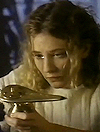
Cate Blanchett appeared in a Television commercial in Australia for Arnott’s Tim Tam biscuits (cookies) in the mid-’90s. Cate was the original ‘Tim tam’ girl in the series of commercials promoting the product.
“I took the gig to raise money for a trip to India. I’ve never even seen the ad. I am dumbfounded at how many people remember that. It really underlines the power of advertising.”
Cate modeling for skin care, watches, clothes and accessories.
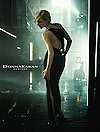
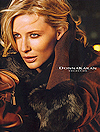
Cate modeled for Donna Karen fashion ads. The advertising deal reportedly brought in six figures. In the photoshoots for the advertisements, Cate was featured in the utmost of sophistication wearing Donna’s clothing.
“Cate’s glacial looks are perfect for Donna Karan – they describe the label so well.” one couture authority told ‘The London Evening Standard’.

Cate Blanchett is currently the face of SK-II skincare products.
She was first introduced to SK-II skincare by a friend seven years ago and noticed instant moisturisation leading to a difference in her skin. Since then she has incorporated SK-II’s meditative rituals into her life and embraced the power of its miracle ingredient Pitera which has helped her unlock her true essence.
SK-II is inspired by a unique philosophy. The core of this philosophy is that there is an intrinsic beauty in every living thing and that we are at our most beautiful when we are true to this essence, true to our uniquely individual beauty – making our skincare ritual unlike any other.
Since Cate’s discovery she has felt compelled to share the secret of her beautiful skin with others. She has genuine passion and belief in SK-II and the miracle of Pitera. That’s why it seemed only natural for the award-winning actress to become SK-II’s global ambassador.
“It’s not part of my skincare ritual…It is my skincare ritual.” – Cate Blanchett.
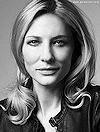
Oscar winning actress Cate Blanchett starred in a 15-minute theatrical performance entitled Minutes of a Separation at a spectacular gala by Swiss watch manufacture IWC Schaffhausen at the Salon International de la Haute Horlogerie (SIHH) on April 8, 2008.
The gala event, named ‘The Crossing’, marks the company’s 140th anniversary and also sees the official launch of the IWC Vintage Collection – Jubilee Edition 1868 – 2008.
The collection comprises reinterpretations of six iconic IWC models – Pilot’s.
Watch Hand-Wound, the Portuguese Hand-Wound, the Ingenieur Automatic, the Aquatimer Automatic, the Da Vinci Automatic and the Portofino Hand-Wound.
The show featured an enthralling performance by Blanchett and co-star British actor Joseph Fiennes, as well as aerialists from Australian physical theatre company, Legs On The Wall.
Minutes was be staged against a backdrop of a massive and elaborately designed set to replicate the scene of the Boston harbor, set to take guests on a voyage back in time.
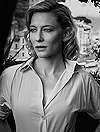
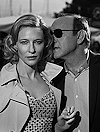
For the actual print advertisements, Cate was photographed by Peter Lindberg. His text from the official campaign website:
When I sit by the harbour at Portofino, time seems to stand still. The scene is still the same as 50 years ago, when Elizabeth Taylor and Richard Burton strolled across the Piazzetta: a huddle of gaily coloured houses and fishing boats rocking gently on a shimmering sea. For half a century now, the Italian fishing village has been the place to be for the rich and beautiful from all over the world. At sunset, the piazza by the harbour with its ritzy bars provides the perfect backdrop to a gentler pace of life – the Mediterranean dolce vita. One rainy morning, I grant myself the luxury of taking the time to stare out to sea.
Anchored in the harbour is a fleet of sleek-looking yachts. Their steering wheels remind me of the Portofino Chronograph, complete with elegant push-buttons that I’ve fallen in love with. Perhaps its designers really were thinking of the wheel of a yacht when they created this fabulous timepiece. While I’m still pondering this, my gaze falls on a menu board offering one of the area’s specialty ice-cream sundaes.
Later, I climb up to the terrace of our splendid hotel, which offers a breathtaking view of the sea, the cliffs and untamed nature. Clattering along on the coast road opposite is a scooter, and in my mind’s eye I have an image of a couple – rather like Gregory Peck and Audrey Hepburn – arranging to go for a spin.
By the evening, we’ve finished our schedule for the day and treat ourselves to one of the famed cocktails made by the Italian barman at the hotel bar. Behind him hang black-and-white photographs of famous guests from bygone times. This locale was frequented not only by stars like Rex Harrison and Ingrid Bergman but also others like Liza Minnelli and Alain Delon. Anyone with a Portofino Hand-Wound Eight Days on his wrist now would finally have the time to wind it up. This model will go on running reliably for a full eight days before it automatically stops and needs rewinding.
Time moves on. Only in Portofino does it stand still. When dark clouds shroud the bay, the place takes on an air of mystery. It is the ideal moment for our shoot. But the first rays of sunlight bring the atmosphere of the dolce vita gently back to life, and there is no longer a free seat to be found on the piazza. That’s how it was when Elizabeth Taylor sashayed across the Piazzetta wearing shorts and carrying her beach bag. And that’s how it will always be.
by Peter Lindbergh
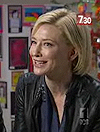
Cate Blanchett has joined forces with a Sydney University academic to run a drama program in schools to help teachers find their inner thespian and students improve their literacy
Currently it is a stand-alone subject, the push is to integrate drama right across the school curriculum.
“If you can bring a book alive, if you can ignite a sense of wonderment in a child’s education, then that is something that will just …” – Cate Blanchett
… Stay forever.” – Andrew Upton
Cate Blanchett as herself.
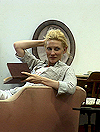
Within the world of theatre the rehearsal room is a sacred space — the private domain where boundaries are pushed, risks taken, mistakes made, vulnerabilities exposed and, at its very best, magic created. It’s not a place into which the public is often, if ever, invited. Until now; In The Company of Actors features an ensemble of Australia’s finest actors, including Cate Blanchett and Hugo Weaving, as they prepare to perform the Sydney Theatre Company’s production of Hedda Gabler, at the prestigious Brooklyn Academy of Music in New York. Opening night is just five weeks away and the pressure is on.
This fascinating behind-the-scenes look pf Hedda Gabler. From the early rehearsals to the final days before the production opened in New York in 2006, a fly-on-the-wall approach is married to revealing conversations with the stars (among them Mrs Andrew Upton, Hugo Weaving and Aden Young), director Robyn Nevin, composer Alan John and occasional technicians.
Cate Blanchett comes across, and is allowed to come across, as an (almost accidentally luminous) actress of great intelligence and good humour. Listening to the rest of this Australian cast talk about their parts, the process and the like is endlessly intriguing.
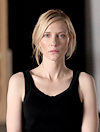
In David Rosetzky’s video portrait of Cate Blanchett in Dress Codes at the International Center of Photography, this Australian actress looks startlingly ordinary, if not frumpy. She wears clunky boots, unflattering slacks and a sagging black tank top. So attired, she moves around a raw, cavernous offstage space, picking up a chair, putting it down, sitting on it, getting up again, occasionally moving her hands in small, dancelike gestures. All the while we hear her talking intently, on the voice-over, about the craft of acting.
At one point Ms. Blanchett dons a loose, sleeveless dress; another top; and a well-worn bomber jacket, creating the impression of someone traveling without benefit of luggage, wearing all her clothes at once. She stretches out on the floor, then rises and sheds the added clothing. Finally, to tinkling vaudeville music, she does some nimble soft-shoe steps. This piece seemed pretty mousy for an exhibition about garments in recent photography and video. But then I realized that the lack of sartorial display was a kind of deprivation that made me embarrassingly aware of my own superficiality: I’m afraid I like famous movie stars, especially female ones, to dress the part.
Dress Codes is the third triennial mounted by the International Center of Photography. It is also the third and final phase of the center’s Year of Fashion, hence the theme. Perhaps predictably, this show isn’t as good as the previous Year of Fashion exhibitions: exhaustive surveys of the fashion work of Edward Steichen and Richard Avedon; the extraordinary “Weird Beauty: Fashion Photography Now”; and a display of works from the center’s collection called “This Is Not a Fashion Photograph.”
From Oscar Wilde: “A history of dress would be a history of minds; for dress expresses a moral idea; it symbolizes the intellect and disposition of a nation.”
A look at Cate Blanchett’s part in fashion.
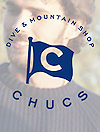
In February 2011, it was reported by ‘Vogue (UK)’ that Cate Blanchett and designer Giles Deacon have collaborated with filmmaker turned retailer Charles Finch on designs for his new London-based Chucs Dive & Mountain Shop.
Deacon has created a print, which will appear on swimwear for Chucs, and Blanchett has collaborated on a pair of high-waisted shorts.
While Deacon opted for colorful graphic prints, Blanchett went the classic route with cuffed khaki shorts featuring a belted waist.
 Welcome to Cate Blanchett Fan, your prime resource for all things Cate Blanchett. Here you'll find all the latest news, pictures and information. You may know the Academy Award Winner from movies such as Elizabeth, Blue Jasmine, Carol, The Aviator, Lord of The Rings, Thor: Ragnarok, among many others. We hope you enjoy your stay and have fun!
Welcome to Cate Blanchett Fan, your prime resource for all things Cate Blanchett. Here you'll find all the latest news, pictures and information. You may know the Academy Award Winner from movies such as Elizabeth, Blue Jasmine, Carol, The Aviator, Lord of The Rings, Thor: Ragnarok, among many others. We hope you enjoy your stay and have fun! 
 Black Bag (202?)
Black Bag (202?)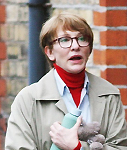 Father Mother Brother Sister (202?)
Father Mother Brother Sister (202?)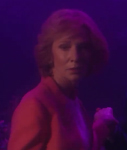 Rumours (2024)
Rumours (2024)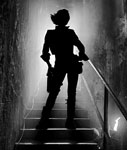 Borderlands (202?)
Borderlands (202?)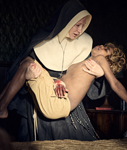 The New Boy (2023)
The New Boy (2023) TÁR (2022)
TÁR (2022)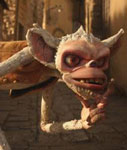 Guillermo Del Toro’s Pinocchio (2022)
Guillermo Del Toro’s Pinocchio (2022)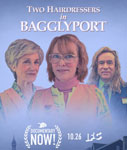 Documentary Now!: Two Hairdressers in Bagglyport (2022)
Documentary Now!: Two Hairdressers in Bagglyport (2022)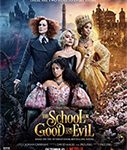 The School for Good and Evil (2022)
The School for Good and Evil (2022)












